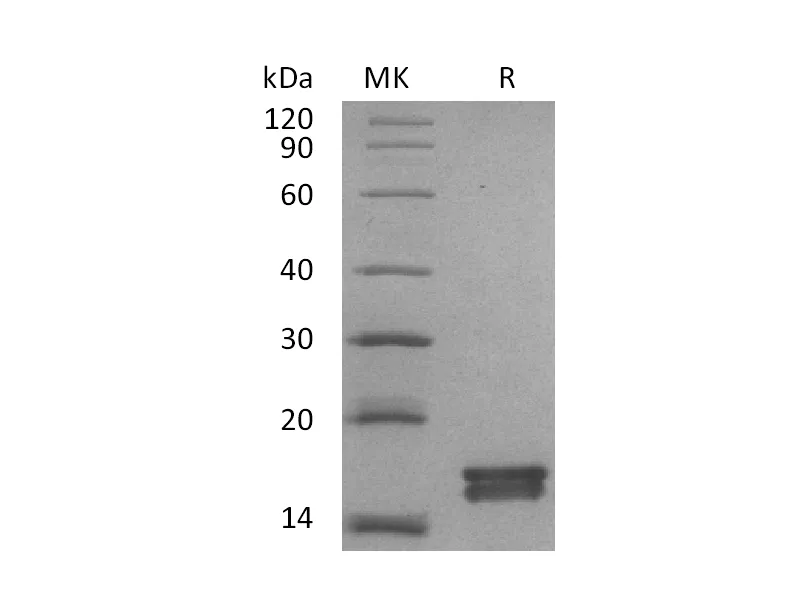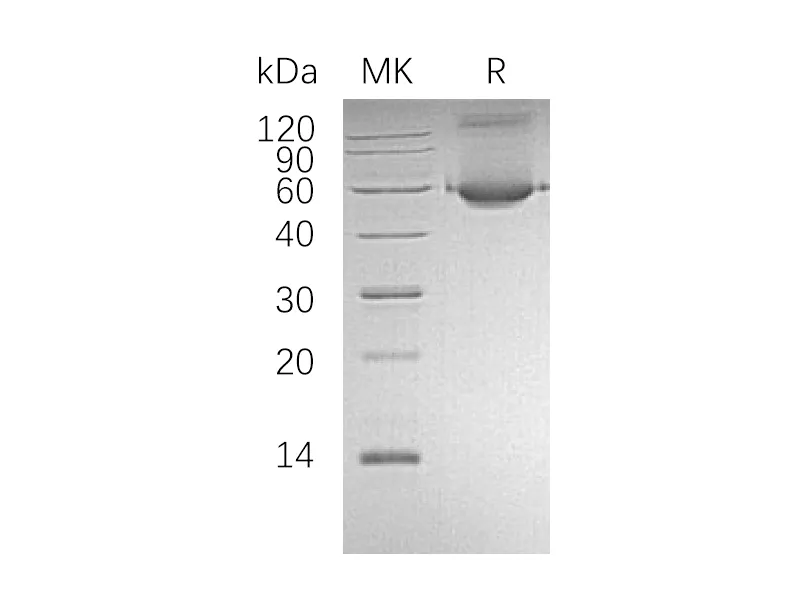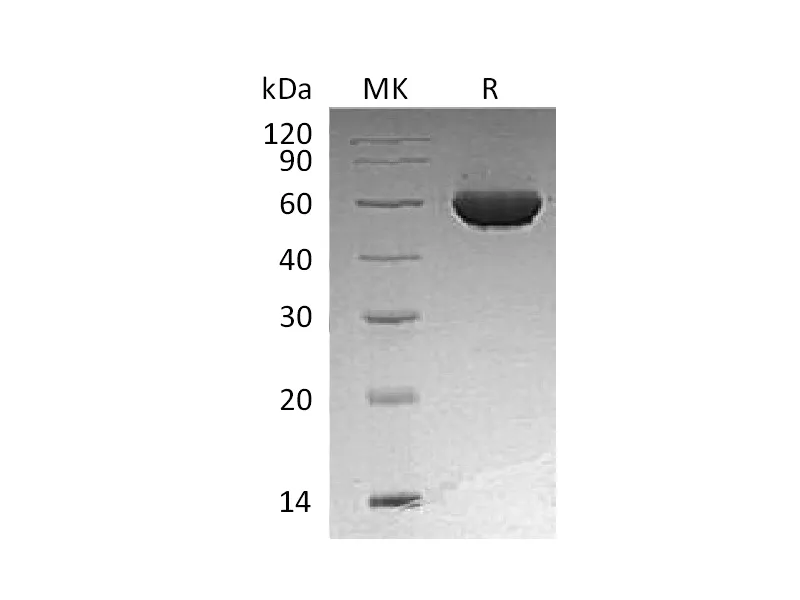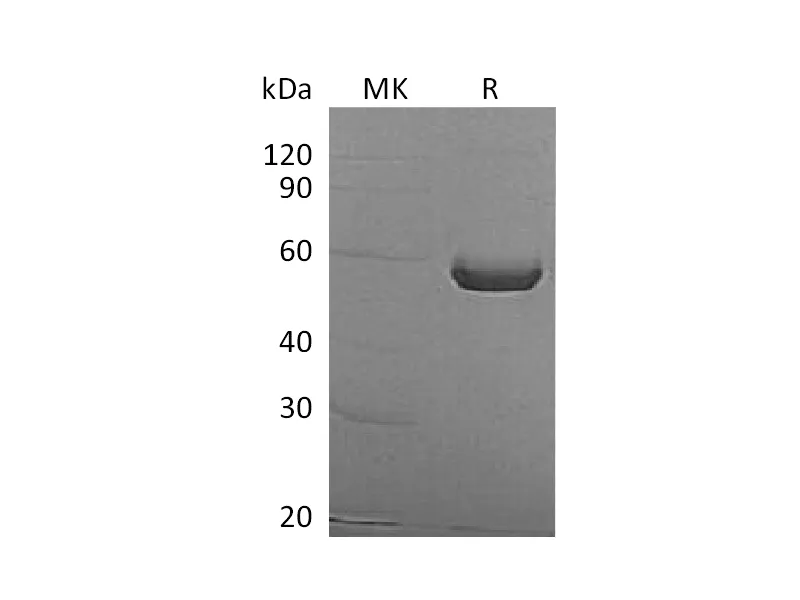Alternative Names
Tumor necrosis factor ligand superfamily member 4; OX40 ligand; OX40L; CD252; Tnfsf4
Background
OX40 ligand (OX40L), also called CD252, is a single-pass type II membrane protein of the TNF/TNF receptor superfamily. OX40L is expressed by DCs, macrophages and B cells and signals via its cognate receptor OX40 which is mainly expressed on APCs. OX40L/OX40 interactions are important in T-cell activation and survival and for the generation of memory T cells from activated effector T cells. OX40L–OX40 co-stimulation leads to activation of TNF receptor associated factor (TRAF) 2, 3 and 5. This pathway has been shown to prolong the survival of effector CD4+Th cells as well as contributes to generation of memory T cells.
Note
For Research Use Only , Not for Diagnostic Use.




